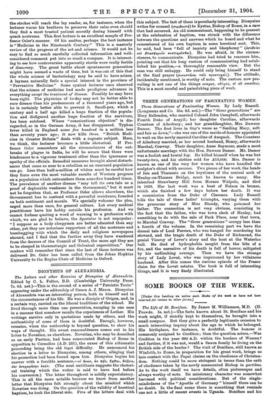The Life of St. Boniface. By James M. Williamson, M.D.
(H. Frowde. 5s. net.)—The facts known about St. Boniface and his work might, if strictly kept to themselves, be brought into a small compass. But they give a perfectly legitimate occasion to much interesting inquiry about the age to which he belonged. His birthplace, for instance, is doubtful. The honour is commonly assigned to Crediton ; then the question arises,—Was Crediton in the year 680 A.D. within the borders of Wessex ? and further, if it was not, would a Saxon family be living on the British side of the border ? The visit of Boniface, still known as Winfrith, to Rome, in preparation for his great work, brings us into contact with the Papal claims on the obedience of Christen- dom. Nothing could he more stringent in terms than the oath of obedience taken by the newly consecrated Bishop in partibus. As to the work itself we have details, often picturesque and always worthy of note. Its missionary character was somewhat leavened with political considerations. But of the single- mindedness of the "Apostle of Germany" himself there can be no doubt. In the final scene there is something that reminds one not a little of recent events in Uganda. Boniface and his
companions had arrived at Dockinga (Dokkum) in order to administer the rite of Confirmation to a number of proselytes. They were attacked and massacred by a host of heathens ; and these in their turn were slaughtered by the Christians when they arrived on the scene. A singularly interesting relic of the event is said to exist in the monastery of Fulda, the very volume 'which the Saint raised to protect his head from the blow that was aimed at it. Dr. Williamson's book is a valuable contribu- tion to the history of missions.



































 Previous page
Previous page